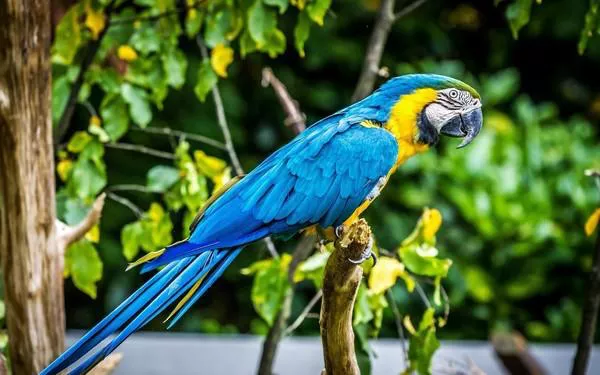Ringneck parrots, known for their vibrant plumage and charming personalities, are a popular choice among bird enthusiasts. One of the most intriguing aspects of these avian companions is their ability to mimic human speech. As owners eagerly await the melodious sound of their feathered friends uttering words, the question arises: when do ringneck parrots start talking? In this article, we will delve into the fascinating world of ringneck parrots, exploring the factors that influence their speech development and shedding light on the timeline of when these colorful birds typically begin to articulate words.
Understanding the Nature of Ringneck Parrots:
Ringneck parrots, scientifically classified as Psittacula krameri, encompass various subspecies, each with its unique characteristics. Native to regions spanning Africa and Asia, these parrots have become cherished companions in households worldwide. Renowned for their intelligence and social nature, ringneck parrots are quick learners, making them capable of acquiring a diverse vocabulary with proper training and interaction.
The Role of Genetics:
The journey of a ringneck parrot‘s vocal development begins with genetics playing a pivotal role. Like humans, some parrots may have a natural inclination towards vocalization, while others may take a bit longer to express themselves verbally. While genetics set the foundation, environmental factors and the parrot‘s individual personality also come into play.
Early Socialization:
Ringneck parrots thrive on social interaction, and early exposure to a variety of sounds and voices can significantly impact their speech development. Birds that are raised in environments rich in auditory stimuli and positive human interaction are more likely to start talking at an earlier age. Regular engagement in conversations, even if it’s just one-sided initially, can encourage these parrots to mimic sounds and eventually form words.
Variability Among Subspecies:
It’s essential to recognize that different subspecies of ringneck parrots may exhibit variability in their developmental timelines for talking. While some may start vocalizing at a relatively young age, others may take more time to develop their speech abilities. Patience is key when awaiting the first words from a ringneck parrot, as individual differences among these birds are natural.
The Influence of Environment:
The environment in which a ringneck parrot is raised plays a crucial role in determining when it will start talking. A stimulating and nurturing environment that encourages vocalization and interaction with humans can expedite the process. On the other hand, a stressful or isolated environment may delay speech development. Creating a positive atmosphere with regular socialization and exposure to various sounds can positively impact a ringneck parrot’s ability to talk.
Mimicking Behavior:
Ringneck parrots are natural mimics, and their ability to imitate sounds is a foundation for learning to talk. Owners can facilitate this process by incorporating repetitive and clear words into daily interactions. Simple phrases, spoken consistently, can be imitated by these intelligent birds. Reinforcement through positive reactions, such as treats or affection, can further motivate ringneck parrots to engage in vocal mimicry.
The Adolescent Phase:
Just like human children, ringneck parrots go through an adolescent phase where they may experiment with sounds and mimicry. This phase, typically occurring around the age of six months to a year, is a critical period for speech development. During this time, owners may notice increased vocalization and attempts at forming recognizable words. Consistent encouragement and interaction are vital during this phase to nurture the parrot’s growing vocal abilities.
Training Techniques:
While there is a natural timeline for when ringneck parrots may start talking, proactive training can play a significant role in accelerating the process. Positive reinforcement, repetition, and patience are key elements of effective training. Establishing a consistent routine for vocal interactions and using treats or praise as rewards for successful mimicry can encourage these birds to expand their vocabulary.
Individual Variances:
It’s crucial for ringneck parrot owners to understand and appreciate the individual variances among these birds. Just as with humans, some parrots may be early talkers, while others may take their time. Comparing the speech development of one ringneck parrot to another can lead to unrealistic expectations. Embracing the unique pace at which each bird progresses is essential for a positive and fulfilling companionship.
Conclusion:
In the enchanting world of ringneck parrots, the journey to verbal communication is a captivating process influenced by genetics, environment, and individual differences. While there is a general timeline for when these colorful companions may start talking, patience and consistent interaction are paramount. Understanding the factors that contribute to speech development in ringneck parrots allows owners to create a supportive environment, fostering a bond that goes beyond the melodic phrases these intelligent birds may eventually utter. As you embark on this delightful journey with your feathered friend, savor the moments of discovery and celebrate the unique vocal personality that makes each ringneck parrot a truly extraordinary companion.
Related Topics:
Where do indian ringneck parrots live?
The best food for ringneck parrots?
How much do indian ringneck parrots cost?

























